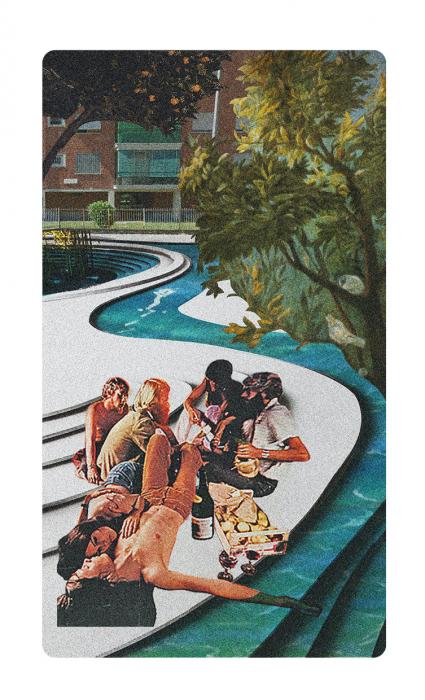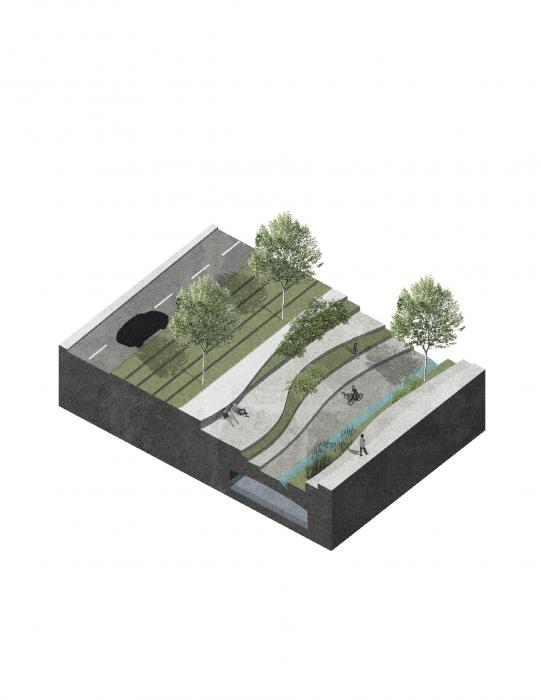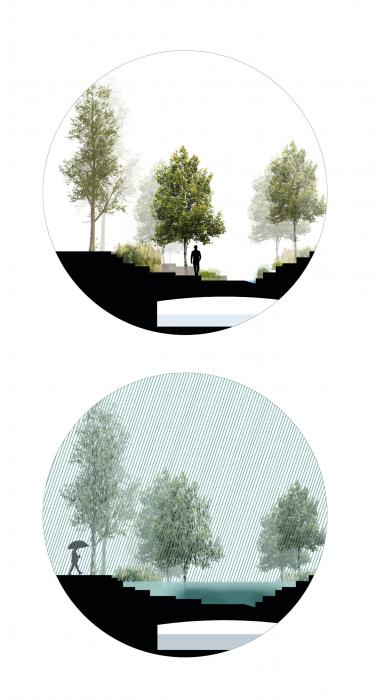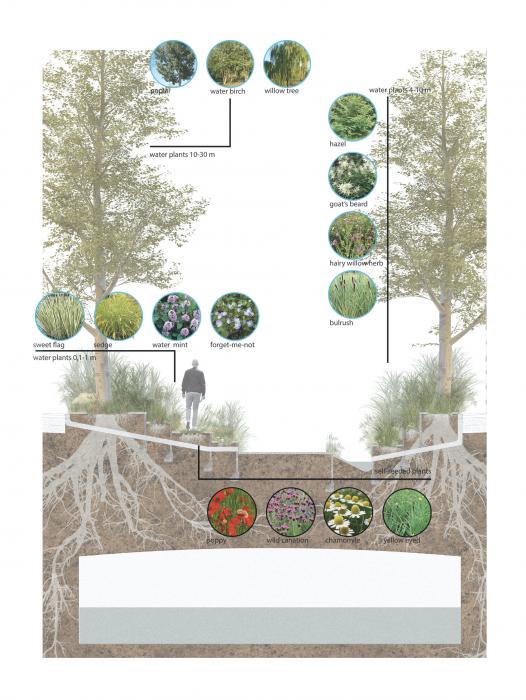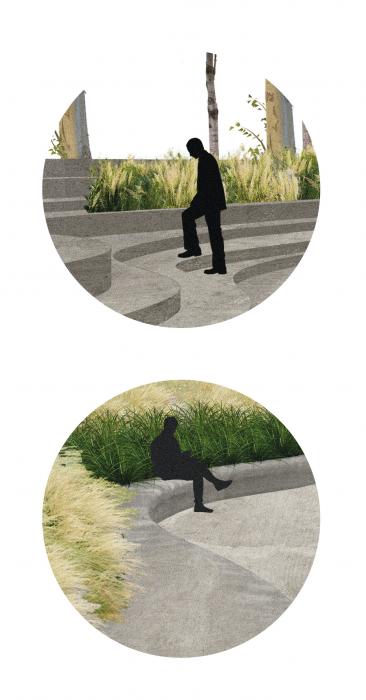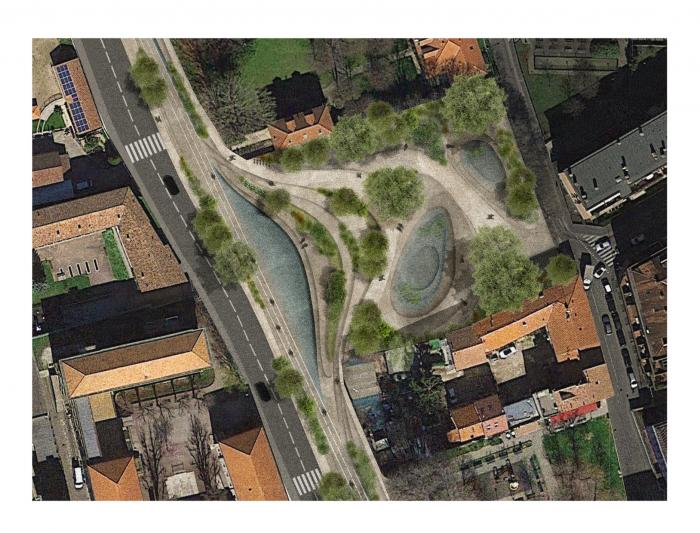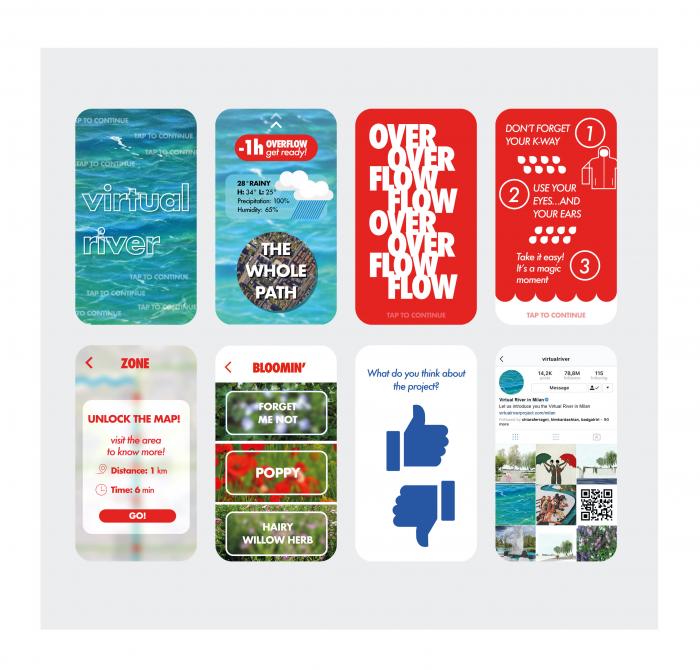I. SUMMARY INFORMATION
Project
268817
Status
Submitted
Award category
Regenerated urban and rural spaces
You want to submit
NEW EUROPEAN BAUHAUS RISING STARS : concepts or ideas submitted by young talents (aged 30 or less)
Project title
Virtual River
Full concept/idea title
Looking for a new relation between Milano and its hidden river
Description
Do you know what happens in Milano when it rains?
The Seveso river, coming from underground, overflows.
I know, that doesn’t sound good, but… what if it did?
The Virtual River is the place where the city meets the river.
It is an open canal, above the underground river, that draws a linear park both for the water and the people.
It’s raining: take your raincoat and come and see the temporary stream flowing through our city!
It’s sunny: take your bike and go with the (virtual) flow!
Where is your concept/idea being developed or intended to be implemented in the EU?
Italy
Lombardia
via Ornato
Milano
20136
II. DESCRIPTION OF THE PROJECT
Please provide a summary of your concept/ idea
The Seveso river is one of the most important streams of Lombardia.
It rises in Cavallasca (Como) and reaches the city of Milano: here the river is buried beneath the city ground and it becomes an invisible presence. When it rains, the river overflows in the Niguarda district.
This phenomenon is the only way in which the river manifests itself in the urban environment, causing the people to have a negative perception of the Seveso.
Starting from the overflow as the generating force of the project, we want to involve the citizen, give them a knowledge and action tool (the App) and show them a possible positive relationship between the River and the City.
We need to build the place for the manifestation of the river: a meeting point between water and people.
The Virtual River project is a superficial incision (an open canal) of 4,7 km that crosses the Niguarda district, right above the path of the underground river, drawing a green path both for the water and the people.“Virtual” because the river itself remains hidden, but its experience is recreated.
When it rains, the canal collects the rainwater, making it flows through the neighborhood in a temporary stream and at the same time slowing the water absorption.
In absence of rain, the “river” retreats and allows people to live in its bed, a green infrastructure that connects Niguardia with the city center. This linear ecosystem has the features of a natural river (banks, vegetation, water), composed by a continuous path and a system of resting areas (“wet areas”) designed as public spaces for meeting, sharing, and experience the river.
Please give information about the key objectives of your concept/idea in terms of sustainability and how these would be met
The aim of the project is not that of eliminating the problem of the overflow with a technical solution, but on the contrary, is to design a public space in (and for) the city where both the river and the people are welcomed, creating an environment designed with sustainable criteria.
The role of managing the water absorption is given to the vegetation: we consider vegetation not as a juxtaposition of independent elements, but as a dynamic system, composed of species that live together and benefit from each other (grasses and canes maintain the soil moist for bushes and trees, while the tallest plants shade the lowest one).
The vegetation system is also focused on reintroducing biodiversity, especially in a part of the city strongly characterized by the presence of vehicular traffic and asphalt surfaces.
Plants and bushes that live along the Virtual River are those that would spontaneously grow near the natural river course, as well as some typical self-seeded species of Milan, characterized by different height, texture, color, smell and sound.
When the rain comes, the green system contributes to slow down rainwater, hindering the stream, and at the same times it acts like a filter between the Virtual River and the road.
Another important point in terms of sustainability concerns mobility: the Virtual river constitutes a green infrastructure that invites people to choose forms of soft mobility, that not only are environmentally-friendly but also promote a healthy lifestyle and a more profound connection with the public space of the city.
An important tool that contributes to fostering sustainable actions is the Virtual River App: among its contents there are information on water quality, practical suggestions for lowering the level of water pollution, it also shows the entire path of the river indicating a possible cycle path that goes from the center of Milan up to the source of the Seveso river, passing through different cities and different landscapes.
Please give information about the key objectives of your concept/idea in terms of aesthetics and quality of experience beyond functionality and how these would be met
The Virtual River is the place where the city (people) meets the river, with its “natural” features. The space of the project is like a riverbed, eroded by time, and the river is virtually recreated in its component: banks, levees, swamps, fast stream and slow stream, fluvial vegetation and so on. The purpose is to experience the “river”, using the senses, smell, hearing...
When it doesn’t rain, vegetation creates a sort of scenography, to be experienced with the senses. It produces different scents, light modulations, shadows and sounds. In these sunny days the path becomes a linear cyclopedonal park, creating a mimesis between the stream of the water and the stream of the people passing by.
The concrete and tangible experience of the Virtual River is enriched by the dedicated app, an important tool for creating interest: it provides a countdown for the overflow (that is transformed by the project in a spectacular event to attend) and it signals the various activities, art installations, shows and events that characterize the virtual river in some focal points and provides information on the different types of vegetation and seasonal blooms.
The APP amplifies the physical experience: it makes the global system visible, reveals the hidden, provides a narrative component for the project. It is a means of knowledge and at the same time a means of exploration.
Please give information about the key objectives of your concept/idea in terms of inclusion and how these would be been met
One of the main focuses of the project is inclusivity: the virtual river is equally made up by the river and by the community that establishes a relation with it.
The project wants to involve and inspire people, of every age and type, to be an active part of the construction process of the city.
We believe that the city is not just the built environment, but above all it’s the social structure that makes the city alive.
The most important physical action that the Virtual River makes in terms of inclusion, is acting like a green (infrastructure?) connection that links together a neglected district (Niguarda), with the city center and vice versa, but also the city of Milano with the territories that the Seveso river crosses in its path.
By doing so, the project builds the platform (both physical and virtual) for good relations between people coming from every part of the city, and conquers some interstitial spaces by reclaiming them for social, cultural and educational manifestation. These spaces for encounters and interaction aim to overcome inequalities and to strengthen the link between different districts and their inhabitants.
Participation is key in the Virtual River process: everyone has the opportunity to be a co-creator and speak out for their city. Indeed, the project provides an important action-tool for the people that is the Virtual River App: this virtual platform is at the same time a means of knowledge and a means of exploration, it does not aim to detach people from the physical space, but on the contrary, the app enhances its experience.
The App is thought not only to produce outputs for the people to receive, but most importantly to collect inputs from the people and metabolize them into future project actions.
Please explain the innovative character of your concept/ idea
The Virtual River project has been thought as an innovative way to deal with an important natural resource, such as the Seveso River, that today has a negative impact on the city and for this reason is being perceived by the people as a problem.
We can say that the innovative character of the project lies in the way in which we shift the question concerning the River: the intention is not to ask “how can we eliminate the problem of the overflow, since it causes discomforts and damages to the citizens?”, but rather “how can we use this powerful manifestation to change people’s perception and to show a different and possible positive relation between the city and one of its river?”.
Give space to the natural manifestation rather than kill it.
The concept of the Virtual River allows us to build the place for the manifestation of the river, that is also a new linear public space for the city, and at the same time it represents an ecosystem service that can collect the rainwater and slow it down before it meets the river and avoids. It is a metabolic action that simultaneously provides a spatial, technical and aesthetic solution.
The Virtual River, rather than deal with to the problem of the overflow by eliminating the presence of the river, creates the space where the people can meet the river and experience his lively and positive force. Every sense is involved (sight, smell, hearing, touch) and the Virtual River creates an immersive ecosystem meant for arouse interest, awareness and questions.
The project also combines the physical experience with the virtual one, not in an antagonistic way, but on the contrary, allowing one to amplify the other and vice versa.
Technology serves the porpoise of engaging and connecting people from different areas of the city, giving them a tool for dialogue, exchange and proposals.
In one word: the Virtual river is a process in the making, not a static solution.
Please detail the plans you have for the further development, promotion and/or implementation of your concept/idea, with a particular attention to the initiatives to be taken before May 2022
The nature of the project is that of being an experimental ground that aims to trigger a discussion and a process that develops in space and time.
In the first year of the project’s timeline (before May 2022), we plan to start a program of co-participation/planning activities that would involve the inhabitants of the Niguardia district.
The workshops and events of this program will take place in those interstitial spaces that the Virtual River project wants to transform. The outcome of these activities will deeply affect the planning and construction process, since the Virtual River project is not a pre-established solution to a problem, but rather a platform, an “informative and participated space” aimed at providing the tools of knowledge and action for people to imagine a new positive relationship between the river and the city.
For this reason, communication is a fundamental element for the project to create awareness and interest.
In a long term logic, we do hope that the people will want to have the river (and its identity) back in their city, permanently.
III. UPLOAD PICTURES
IV. VALIDATION
By ticking this box, you declare that all the information provided in this form is factually correct, that the proposed concept/idea has not been proposed for the New European Bauhaus Rising Stars Awards more than once in the same category.
Yes
